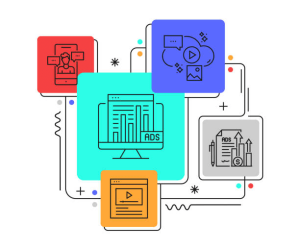Enhancing home security has become more accessible and effective thanks to advancements in smart home technology. These devices not only add layers of security but also integrate seamlessly into our lives, offering both convenience and peace of mind. Here’s how various smart home devices can help fortify your home’s security.
Smart Locks: Enhancing Entryway Security
Smart locks are at the forefront of home security, providing robust features such as biometric access, which uses fingerprints or facial recognition for entry. This technology ensures that only authorized individuals can access your home, adding a layer of security that traditional locks cannot match. These locks also send real-time alerts to your phone if they detect tampering or forced entry, allowing you to react promptly to potential security breaches.
Moreover, many smart locks integrate with other home automation systems, enabling scenarios like lights turning on automatically when the door is unlocked. This integration enhances security and adds convenience, making it seem like the home is occupied even when it isn’t.
Window Blinds and Shades

Window blinds and shades contribute significantly to home security by enhancing privacy and creating the illusion of occupancy, even when no one is home. Programmed to open and close at predetermined times, they maintain a routine that simulates activity within the house, deterring potential burglars. This functionality helps keep prying eyes away and plays a crucial role in energy conservation by adjusting according to the time of day and sunlight exposure, thereby optimizing indoor temperatures.
In addition to their practical benefits, automatic blinds and shades can be integrated with other smart home technologies. For instance, they can close automatically if a security camera detects movement outside or opens in response to smoke alarms to allow for better ventilation. This level of integration enhances your home’s functionality and security, making automatic window blinds and shades an excellent investment in both comfort and safety.
Motion Sensors: Detecting Unusual Activity
Advanced motion sensors trigger alarms and can connect to your home’s Wi-Fi network to send you instant notifications about any detected movement. This capability ensures you’re always aware of what’s happening in your home, whether you’re upstairs or across the globe. Some sensors are designed to ignore pets, reducing false alarms and increasing the accuracy of alerts about human activity.
These sensors can also trigger other actions within your home, like turning on lights or activating a camera to record, enhancing your ability to monitor and respond to incidents in real-time. This proactive approach to home security keeps your premises under vigilant surveillance.
Smart Lighting: Deterring Intruders with Automation
Smart lighting systems can be programmed to react to other smart devices in your home, such as activating when cameras detect motion. This scares off potential intruders and alerts neighbors and passersby to unusual activity. You can also customize lighting patterns to mimic your usual activity, further fooling burglars into believing someone is always at home.
Additionally, these lights can adjust based on ambient light conditions, ensuring that they operate efficiently and only when necessary. This adaptability not only enhances security but also helps in energy conservation, making smart lighting a dual-purpose investment.
Security Systems
Today’s smart security systems are equipped with features like glass breaks and door/window sensors, which provide immediate alerts if someone forcefully attempts to enter your home. These systems can be armed and disarmed remotely, offering you full control over your home security no matter where you are.
Furthermore, integration with cloud storage allows you to save and review footage from security cameras, allowing you to monitor and playback any suspicious activity. This is crucial for providing evidence to law enforcement during a burglary or unauthorized entry.
Remote Monitoring
Remote monitoring extends beyond visual surveillance; it includes environmental monitoring, which can detect smoke, fire, or water leaks. These alerts can be life-saving and property-saving, ensuring you’re informed about any emergency in your home. Integration with smartphones and tablets allows homeowners to receive these real-time alerts directly to their devices.
This level of connectivity also allows for routine checks from anywhere, ensuring that doors are locked, appliances are turned off, and the garage is closed. It’s like having a virtual security guard that provides constant updates and reminders, enhancing your peace of mind.
By incorporating these smart home devices into your security strategy, you can significantly enhance the safety and security of your home. These tools provide robust protection and offer convenience and efficiency, making them an indispensable part of modern home management.



